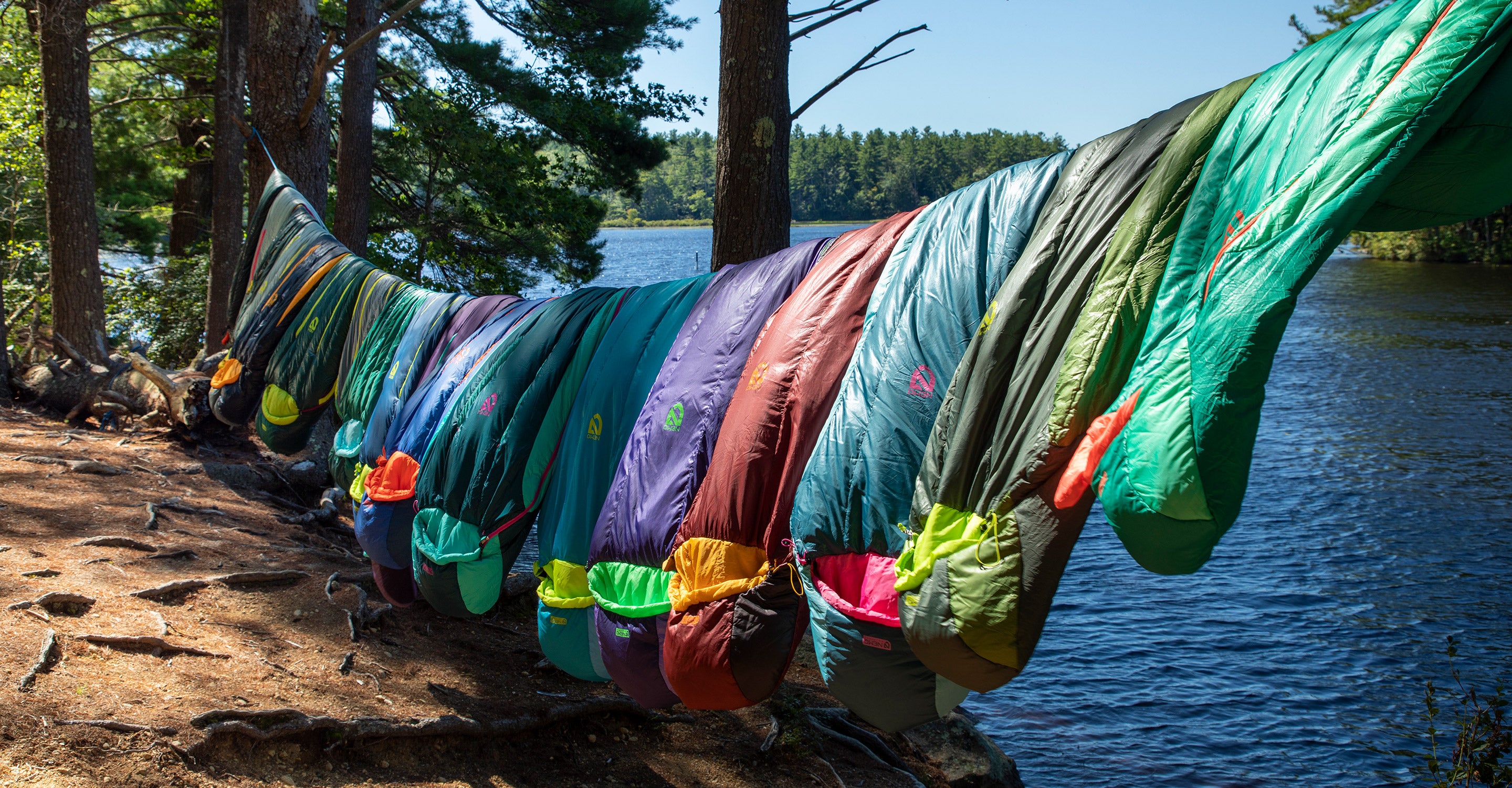Dealing with a dirty sleeping bag can be a real downer, especially when you’re planning your next adventure. A smelly or soiled Nemo sleeping bag can ruin a perfectly good camping trip. Luckily, cleaning it doesn’t have to be a daunting task. This guide will walk you through the best methods to keep your Nemo sleeping bag fresh, clean, and ready for countless nights under the stars. We’ll start with quick spot cleaning tips and then move into a comprehensive cleaning process, ensuring your bag stays in top condition for years to come.
While a quick refresh can often tackle minor dirt, a thorough cleaning will restore loft and extend the life of your bag. This comprehensive guide covers everything from choosing the right cleaning products to drying your bag correctly, preventing damage, and maintaining its insulating properties. By the end, you’ll have the knowledge to confidently clean your Nemo sleeping bag and keep it performing its best.
Understanding Your Nemo Sleeping Bag’s Materials
Before diving into cleaning, it’s crucial to identify your Nemo sleeping bag’s fill and shell material. This will dictate the appropriate cleaning methods.
- Down Sleeping Bags: Filled with goose or duck down, renowned for their warmth-to-weight ratio. Requires special down-specific cleaning products.
- Synthetic Sleeping Bags: Filled with synthetic materials like PrimaLoft, offering good insulation even when wet. More forgiving to clean than down.
- Shell Materials: Commonly made of nylon or polyester. Check the care label for specific instructions.
Always refer to the care label sewn into your sleeping bag for the manufacturer’s specific recommendations.
Common Causes of Sleeping Bag Dirtiness
Several factors contribute to a dirty sleeping bag. Understanding these helps in preventing excessive soiling and tailoring your cleaning approach.
Body Oils and Sweat
Over time, body oils and sweat accumulate inside the bag, leading to odors and reduced loft.
Dirt and Debris
Camping environments introduce dirt, dust, leaves, and other debris.
Food Spills
Accidental food spills inside the bag require immediate attention to prevent staining and attracting insects.
Moisture and Mildew
Improper storage in damp conditions can lead to mildew growth, causing unpleasant odors and damaging the fill.
How to Clean a Nemo Sleeping Bag: A Step-by-Step Guide

This section details the cleaning process, catering to both down and synthetic bags.
Method 1: Spot Cleaning (For Minor Stains)
This is ideal for addressing small stains or localized dirt.
Diagnosing the Issue
Identify the type of stain (food, dirt, oil).
Fix Steps
- Prepare a mild cleaning solution: Mix a small amount of down wash (for down bags) or mild detergent (for synthetic bags) with lukewarm water.
- Apply to the stain: Gently dab the solution onto the stain with a soft cloth. Avoid saturating the fabric.
- Rinse: Use a clean, damp cloth to remove the cleaning solution.
- Dry: Allow the area to air dry completely.
Method 2: Hand Washing (For General Cleaning)
Recommended for a more thorough clean, especially for down bags.
Diagnosing the Issue
Assess the overall level of dirtiness to decide if hand washing is sufficient.
Fix Steps
- Fill a bathtub or large container: Use lukewarm water.
- Add cleaning solution: Add down wash (for down bags) or mild detergent (for synthetic bags) according to package instructions.
- Submerge the bag: Gently submerge the sleeping bag and agitate the water to distribute the cleaning solution. Avoid harsh scrubbing.
- Soak: Let the bag soak for 15-30 minutes.
- Rinse thoroughly: Drain the soapy water and rinse the bag multiple times with clean, lukewarm water until all traces of detergent are gone. This is crucial to prevent clumping.
- Gently press out excess water: Do not wring or twist the bag.
Method 3: Machine Washing (For Synthetic Bags – Use Caution)
Some synthetic bags can be machine washed, but proceed with caution. Always check the care label first.
Diagnosing the Issue
Confirm the bag is machine washable according to the care label.
Fix Steps
- Use a front-loading washing machine: Top-loading machines with agitators can damage the bag.
- Use a mild detergent: Avoid harsh chemicals or bleach.
- Wash on a gentle cycle: Use cold water and a slow spin speed.
- Rinse thoroughly: Run an extra rinse cycle to ensure all detergent is removed.
- Gently press out excess water: Do not wring or twist the bag.
Drying Your Nemo Sleeping Bag
Proper drying is essential to restore loft and prevent mildew.
Down Sleeping Bags
- Tumble dry on low heat: Use dryer balls or clean tennis balls to help break up clumps and restore loft. This process can take several hours.
- Check for clumps: Stop the dryer periodically to fluff the bag and break up any remaining clumps.
- Air dry completely: Once mostly dry, hang the bag in a well-ventilated area to finish drying.
Synthetic Sleeping Bags
- Tumble dry on low heat: Use dryer balls or clean tennis balls.
- Air dry: Hang the bag in a well-ventilated area to complete the drying process.
Important: Ensure the bag is completely dry before storing it to prevent mildew.
How to Prevent Future Dirtiness & Maintenance Advice
Preventing dirt is easier than cleaning.
- Use a sleeping bag liner: A liner absorbs moisture and dirt, protecting the bag.
- Change clothes before entering the bag: Wear clean, dry clothes to minimize oil and sweat transfer.
- Store properly: Store the bag loosely in a large storage sack, avoiding compression for extended periods.
- Air out regularly: After each use, air out the bag to allow moisture to evaporate.
- Avoid direct sunlight: Prolonged exposure to sunlight can damage the fabric.
Pro Tips for Nemo Sleeping Bag Care
- Down-specific detergents are essential for down bags: Regular detergents can strip the natural oils from the down, reducing its loft.
- Dryer balls are your best friend: They prevent clumping and restore loft during the drying process.
- Be patient with drying: Properly drying a down bag can take a full day or more.
- Avoid using fabric softener: It can coat the fill and reduce its insulating properties.
- Consider a waterproof/breathable bivy sack: Adds an extra layer of protection against moisture and dirt.
Professional Help Section

- When to seek professional cleaning: If you have a particularly stubborn stain or are uncomfortable cleaning the bag yourself, consider a professional outdoor gear cleaning service.
- Finding a reputable cleaner: Look for companies specializing in down and synthetic sleeping bag cleaning.
- Typical cost: Professional cleaning can range from $80 to $200 depending on the bag’s size and condition.
- Warranty considerations: Check your Nemo sleeping bag’s warranty before seeking professional cleaning, as some services may void it.
FAQ Section
Q: Can I use bleach to clean my sleeping bag?
A: Absolutely not. Bleach can damage the fabric and fill, reducing its performance and lifespan.
Q: How often should I clean my sleeping bag?
A: It depends on usage. A general guideline is to clean it 1-2 times per year, or more frequently if heavily soiled.
Q: What if my down bag still smells after cleaning?
A: Ensure all detergent is thoroughly rinsed. You may need to repeat the washing and drying process.
Q: Can I iron my sleeping bag?
A: No, ironing can damage the fabric and fill.
Alternative Solutions Section
| Solution | Pros | Cons | Best For |
|---|---|---|---|
| Gear Wash Kits | Convenient, pre-portioned | Can be more expensive | Quick, easy cleaning |
| Professional Cleaning | Thorough, expert care | Costly, requires shipping | Heavily soiled or delicate bags |
Keep Your Nemo Sleeping Bag Running Smoothly
By following these guidelines, you can keep your Nemo sleeping bag clean, fresh, and performing optimally for many adventures to come. Remember to always check the care label and choose the appropriate cleaning method based on your bag’s materials. Don’t let a dirty bag hold you back from enjoying the great outdoors!
Have you successfully cleaned your Nemo sleeping bag? Share your experience or any helpful tips in the comments below to help other readers!




